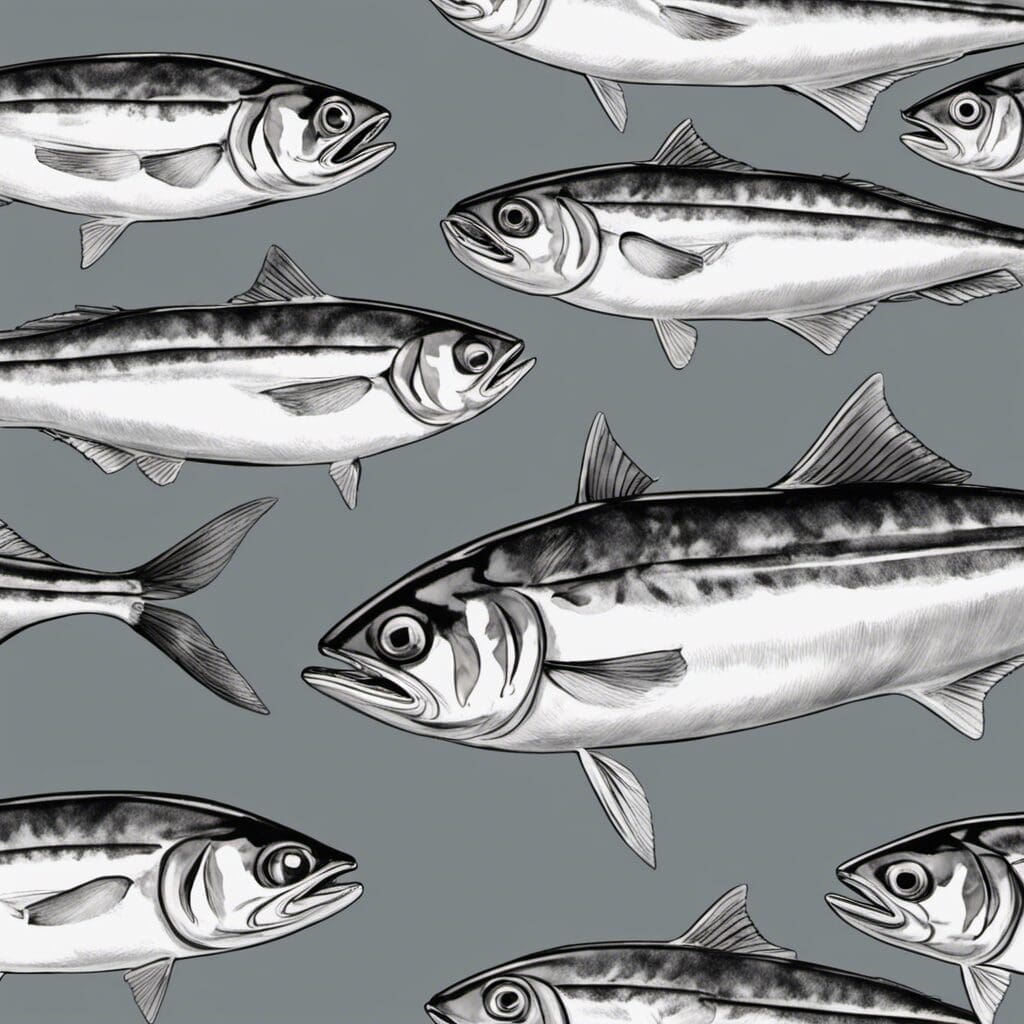Introduction
The Mackerel Scad, or Decapterus macarellus, is a fish species belonging to the Carangidae family. A medium-sized fish with a silvery-blue color, it’s commonly found in tropical and subtropical waters.
Conservation Status
The Mackerel Scad currently enjoys the IUCN status of ‘Least Concern’ thanks to its wide distribution and high population numbers. There are no specific conservation efforts targeted towards this species due to its healthy population.
Statistics
| Statistic | Average | Range |
|---|---|---|
| Length | 30cm | 20-35cm |
| Weight | 0.2-0.36kg | 0.15-0.9kg |
| Average Lifespan | 5-7 years |
Distribution
The Mackerel Scad is distributed in tropical and subtropical oceans worldwide. Notably, they are found in the West Atlantic, Pacific Ocean, and around Australia and Japan. The fish species seems to prefer warmer waters, and their distribution may be affected by seasonal temperature changes, moving inshore or towards the surface in cooler months.
Habitats
Mackerel Scads inhabit both saltwater and brackish water environments. As pelagic fish, they prefer open waters and often hover around reefs and off-islands. They typically reside in depths between 1 and 200m, and thrive in temperature ranges between 20-30°C.
When and Where to See
The Mackerel Scad is year-round in most habitats but is more plentiful during warmer months. They are predominantly seen during the night, often closer to the water surface.
Best Fishing Locations
The top places to fish for Mackerel Scad include:
- Gulf of Mexico
- Caribbean Sea
- Great Barrier Reef, Australia
- Southern Japanese coasts
- Hawaii
- Ecuador
- Philippines
- Nicaragua
- Costa Rica
- Panama
How to Catch
Mackerel Scad readily takes a wide variety of baits and lures, including small strips of squid or pieces of fish, artificial lures, and feathers. Techniques include fly fishing, surf fishing, and trolling. The best time to catch them is in early morning or late afternoon.
Identification Guide
The Mackerel Scad has a streamlined, elongated body with a silvery-blue color on top, changing to silver on the sides and belly. They have narrow dark bands along the sides, extending backward from the eyes.
Culinary
Mackerel Scad has a strong, rich flavor and firm, fatty flesh. Due to its flavorful profile, it’s often used in stews or grilled. The fish is rich in omega-3 fatty acids, proteins, vitamins, and minerals.
Additional Information
Mackerel Scad is a schooling species that feeds on a variety of small fish, squids, and crustaceans. They have few natural predators, but human-induced threats such as overfishing and environmental changes challenge their population. The species also has contributed significantly to commercial and subsistence fisheries in many regions.
References and Further Reading
For more in-depth information about Mackerel Scad, the following resources are recommended:

